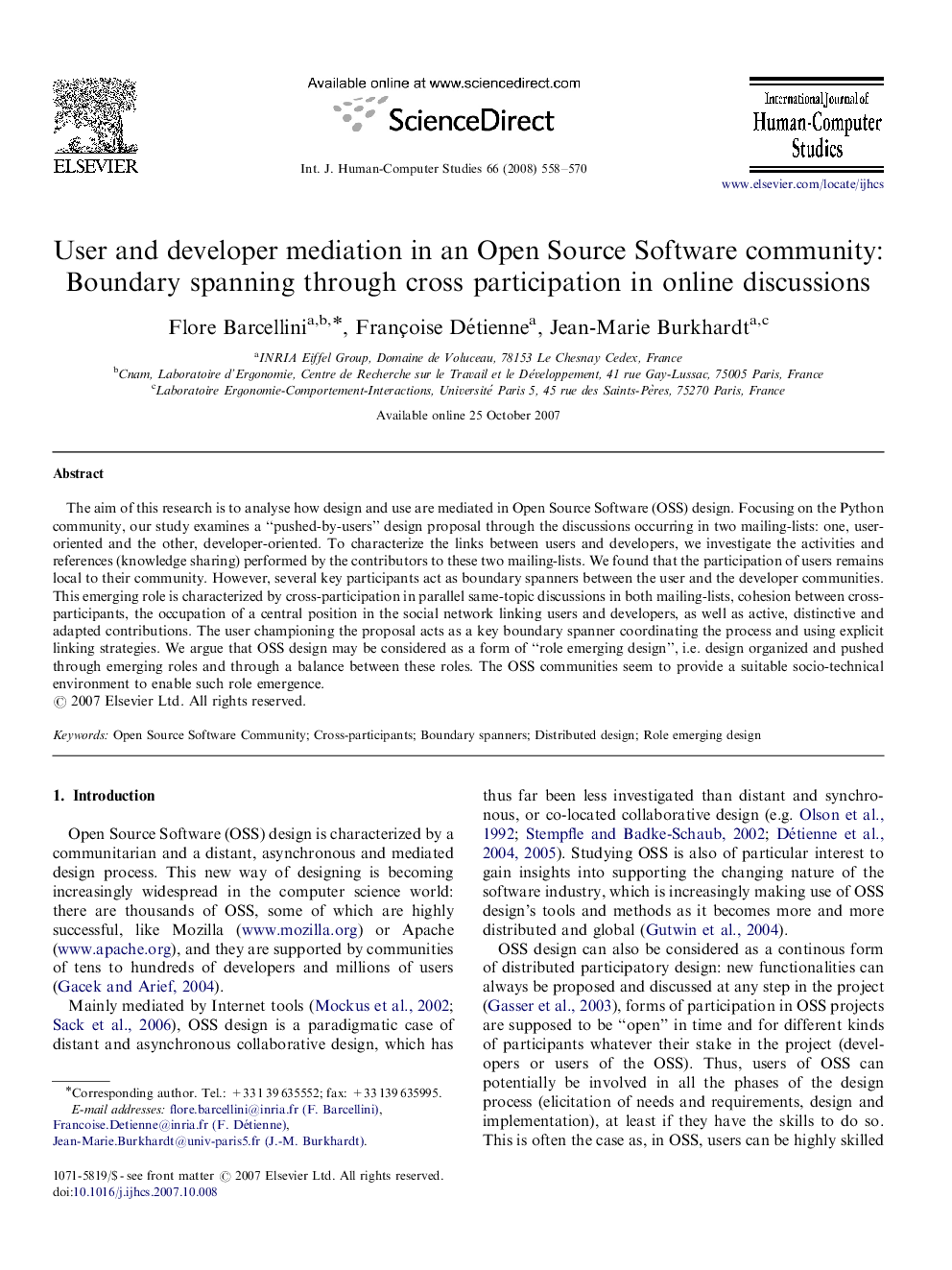| Article ID | Journal | Published Year | Pages | File Type |
|---|---|---|---|---|
| 400774 | International Journal of Human-Computer Studies | 2008 | 13 Pages |
The aim of this research is to analyse how design and use are mediated in Open Source Software (OSS) design. Focusing on the Python community, our study examines a “pushed-by-users” design proposal through the discussions occurring in two mailing-lists: one, user-oriented and the other, developer-oriented. To characterize the links between users and developers, we investigate the activities and references (knowledge sharing) performed by the contributors to these two mailing-lists. We found that the participation of users remains local to their community. However, several key participants act as boundary spanners between the user and the developer communities. This emerging role is characterized by cross-participation in parallel same-topic discussions in both mailing-lists, cohesion between cross-participants, the occupation of a central position in the social network linking users and developers, as well as active, distinctive and adapted contributions. The user championing the proposal acts as a key boundary spanner coordinating the process and using explicit linking strategies. We argue that OSS design may be considered as a form of “role emerging design”, i.e. design organized and pushed through emerging roles and through a balance between these roles. The OSS communities seem to provide a suitable socio-technical environment to enable such role emergence.
